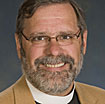Commentary on Psalm 15
1LORD, who may dwell in your tabernacle? Who may abide upon your holy hill?
2Those who lead a blameless life and do what is right, who speak the truth from their heart;
3they do not slander with the tongue, they do no evil to their friends; they do not cast discredit upon a neighbor.
4In their sight the wicked are rejected, but they honor those who fear the LORD. They have sworn upon their health and do not take back their word.
5They do not give their money in hope of gain, nor do they take bribes against the innocent. Those who do these things shall never be overthrown.
The first lesson is a portion of Moses’s final charge to the people as they stand to take possession of Canaan. The reading from Deuteronomy makes it clear that obedience to the law is a condition for successful and sustained occupying of the land. The result is that Israel will be seen as an exemplary nation attracting the attention of the world both because of its discerning wisdom and because it has a God who stays near.
Today’s psalmody is an apt response to the first lesson. It too connects obedience to God’s law with sustained occupation of a geographical place. The psalm approaches the question of obedience, though, from a more priestly or holiness angle; obedience renders a people “blameless” rather than “wise and discerning.”
The entire psalm has the feel of a liturgical call and response. It begins by posing to God a single rhetorical question expressed in parallel construction, “Who may dwell in your tabernacle, your holy hill?” The balance of the psalm constitutes God’s response. The middle verses (verses 2-5a) answer the opening question by describing specific elements of the necessary blameless life. The psalm then ends (verse 5b) with an emphatic final answer and promise: “those who do these thing shall never be overthrown.”
The elements of the blameless life can be clustered into four loose interwoven categories: (1) personal character — doing what is right, speaking the truth, keeping one’s word; (2) love of others — no slander, no evil done to friends, no discrediting of neighbors; (3) an attitude of holy piety — rejecting the wicked and honoring those who fear God; and (4) economic discretion — no risky investments and not allowing money to cloud one’s judgment.
In a sermon on this psalm, any of these characteristics of the “blameless life” could be developed, especially in conversation with the reading from Mark where Jesus speaks about distinguishing between outward behaviors and inward attitudes. And as noted, the psalm could also be an accompaniment to a sermon dealing with the Hebrews’ migration into the Promised Land. Or it may be that national or local circumstances (an egregious economic or political scandal, for example) would suggest treatment of just one element of the psalm’s exhortation.
Another option, and what I’d like to hear about when I’m in worship on September 2, is a sermon that considers deeply the psalm’s question-and-answer arc. The challenge here will be making judgments about how to refer the key elements of the psalm into or toward our world. What does it mean to abide on God’s “holy hill”; who even desires that life? To whom is the opportunity to dwell in God’s tabernacle available? And how do we understand the relationship between blameless life and sustainable inhabitation there?
To whom in our world might the offer of life in this relationship to God’s dwelling be made? The historical referent is the ancient Hebrews at some point in their history (probably pre-exile). Two aspects of the psalm suggest that the contemporary referent should be persons in covenant relationship with God (i.e., present-day people of faith, the church). First, the offer is to live with God in proximity to religious locations. Second, the psalmist feels no need to explain why dwelling there would be desirable. I don’t mean to preclude an invitation to a secular, cultural audience, only that the marketing language might have to be less sectarian.
Where is this place of abiding? Even in the psalm the terms “tabernacle” and “holy hill” likely refer metaphorically to a quality of life rather than to a narrow geographical location (though the gravitational pull of the first lesson reminds us that there were and are literal “holy hills” in Canaan). The cultic connotations of “tabernacle” and “holy hill” suggest that this quality of life is characterized by nearness to God through worship and a life lived faithfully in God’s instruction. A direct connection between holy obedience and communal security is cemented in the final promise “not be overthrown.”
So, an interesting first challenge for preaching here is to describe the life with God for which “tabernacle” and “holy hill” are compelling metaphorical pointers. A second challenge is determining what sustainable occupation of this “place” might mean. Here the preacher must negotiate the psalm’s lack of moral or spiritual grey zones. Is dwelling in God’s tabernacle an all or nothing proposition (as the first lesson and other scriptural narratives suggest) or do we enjoy less or more of that quality of life depending on our level of obedience (“holy hill” as time share?). The opportunity here is for a preacher to be “like Moses” in envisioning the personal and communal life desired for us by God.

September 2, 2012